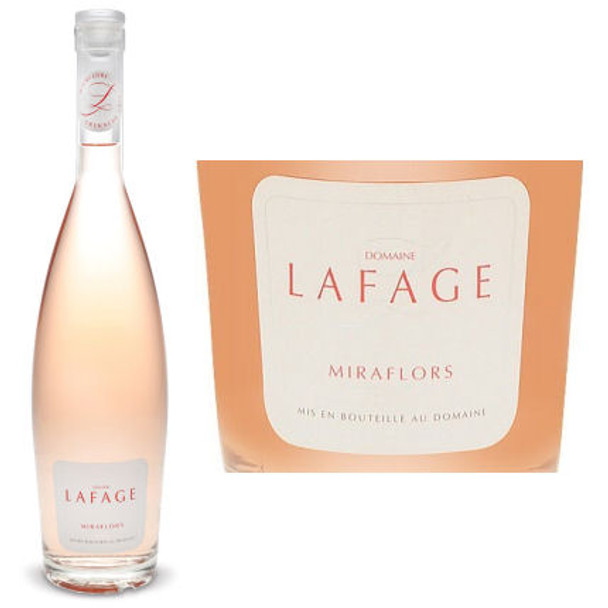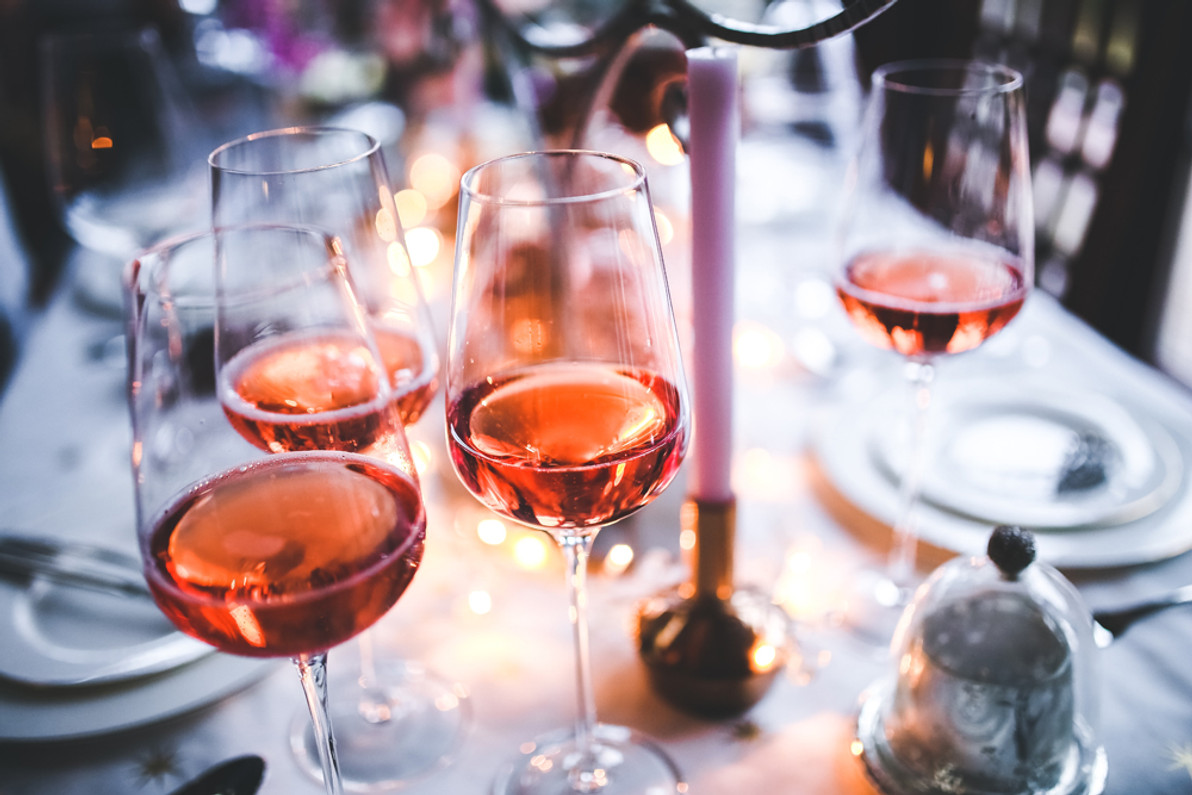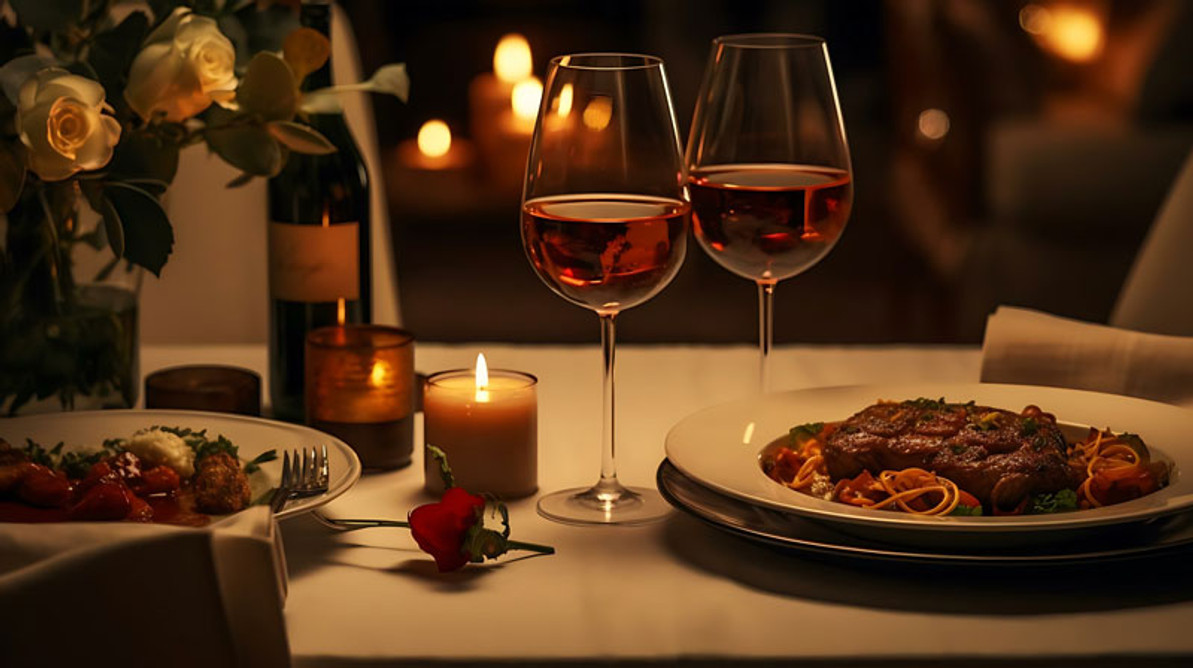What is Rosé Wine?
Rosé wine has become everyone’s favorite warm-weather drink. A great bottle of this wine is best drunk cold. You either stick it in the refrigerator or put ice cubes in it. Unlike red wine, it does not improve over the years. In fact, you shouldn’t drink a bottle that’s dated more than three years back.
Rosé Wine is made from red grapes that are crushed and macerated with their red skins for a certain amount of time. What gives this wine its trademark pinkish hue is the fact that the skins and stems of the red grape are taken out anywhere within hours or a few days of the wine-making process. The pink hue and its lighter body compared to other wines is the result of the very short contact with the grape skin.
The History of Rosé Wine 
It may seem like it recently emerged in the wine scene, but actually, rosé is regarded as one of the first recorded wines. However, the early types of rosés, mainly found in Ancient Greece, were not at par with what is available today.
The ‘pleasant pink wine’ has its roots in Massalia in southern France. This is in the region of modern-day Marseille. When the Phocaeans brought grape vines in the area in 6th century BC, they produced field blends of white and red grapes. These lighter wines became very popular so by the time the Romans landed in Provence, the ‘pink wines of Massalia’ were already well-known. The trade networks of the Romans brought this wine to all the regions of the Mediterranean.
The United States was first introduced to rosé when Sutter Home White Zinfandel was introduced in 1975. This was a happy accident as Sutter Home’s Bob Trinchero couldn’t fully convert the sugar to alcohol, resulting in a slightly sweet wine.
Relegated to lower-priced restaurants and cafés from the 1980s to the 1990s, rosé emerged back into the scene in the early 2000s when U.S. resorts started stocking up on pink French wine, which Americans loved. This led to a surge in popularity of rosé, with social media making this wine greatly loved. Seizing an opportunity because of market demand, highly acclaimed French winemakers started producing excellent rosés. Today, this delicious wine is a staple in every major fine-dining restaurants, hotels, and resorts all over the world.
What Classifies a Rosé Wine?
Rosé is made from various types of red grapes. Unlike other wines, it isn’t from any specific grape or region. Often, rosé wines come from blends of multiple grape varieties. Some of the most common grapes used in rosés are Pinot Noir, Mourvédre, Syrah, Grenache, Carignan, Cabernet Sauvignon, and many more.
Rosés are typically made in two ways. The first way is when red grapes are pressed right after harvest, yielding the pale pink color. The second way is when the grapes are crushed then allowed to sit in contact with the skins before separating the pink juice.
The parts of the world famous for producing this pink-hued wine are France, Spain, Italy, and the United States. There are also great rosés from Chile, Uruguay, Germany, and Australia. Dry, traditional rosé is made in France, particularly in the Provence. In Spain, it is called “rosado”, while in Italy it is called “rosato.”
 What Foods Pair Best with Rosé Wine
What Foods Pair Best with Rosé Wine
The best thing about rosé is that it is extremely versatile. This is because it happily falls in between red and white wines. It is less intense than red wine, yet has more depth than whites. Because of its medium flavor profile, it almost always goes well with whatever type of meat you prefer: fish, chicken, steak, or pork. It even goes well with vegetable dishes.
Dry rosés are best paired with lighter dishes, while sweeter rosés work with heavier or spicier types of food. The perfect food pairings for sweet White Zinfandel are buttery pastas or vegetable dishes. Tavel and Syrah rosés are best paired with stews and red meats.
The emergence of rosé as one of the most preferred wines is due to its versatility and its relatively inexpensive price. It is the ideal wine for any occasion – cocktail parties, luncheons, a beach outing, a picnic, or even for just chilling in front of the TV. When it comes to price, it is a bargain compared to other wines. You should be able to get a decent bottle within the $15 - $30 range.
Different Shades of Rosé
Rosé is available in different shades, depending on the grape variety and where it is grown. Often called the “pink wine”, its shades can range from pale pink to nearly red. Darker rosés usually have more body than their paler varieties. However, it may come as a surprise that there are paler-hued wines that have complex flavors.
Provence rosés are dry, with a crisp bite. They are usually made from a blend of Cabernet Sauvignon and Syrah. Just like the Provence variety, a Pinot Noir rosé has fruity notes and a bright, acidic taste. However, it is a shade darker and it is a bit earthier.
One of the most common varieties of rosé is White Zinfandel, which is bright pink in color and sweet. Similarly, White Merlot is also sweet, tasting like a berry dessert.
Tavel region in the Rhone Valley that exclusively makes rosé mainly from Grenache. This makes their wine hearty and spicy, close to red wine. Tavel rosé is darker than the other varieties. Another darker rosé is made from Syrah grape, which is very tannic.
Some of the Most Popular Rosé Wines
Domaine Lafage Cotes du Roussillon Miraflors Rose

Domaine Lafage Cotes du Roussillon Miraflors Rosé. One of the most popular Rosé wines we carry, it's named after the old estate in Domaine Lafage. The grapes are sourced from 80 year old vines. It's a direct press rosé and the colors come from the skins of the pink Grenache Gris berries. This rosé is aged in tanks for four months before being bottled.
Conundrum California Rose

Conundrum California Rose. This rosé wine is made in California by Conundrum. The first vintage was released in 2016 but it has since before a customer favorite. This rosé is a blend from varietals that are grown in the coastal regions of California.
Recent Posts
-
Get Ready For Fall With Spiked Apple Cider
The fall season is fast approaching, and with fall comes apple cider and all its delicious goodness. …Sep 25th 2024 -
All About White Sangria
Craving white sangria? Here are simple and delicious white sangria recipes that are perfect for any …Jul 19th 2024 -
Perfect Pairings: Elevate Your Meal with Long Shadows FEATHER Columbia Valley Cabernet Sauvignon 2019
When it comes to enjoying a fine bottle of wine, the right food pairing can make all the differen …Jul 17th 2024




